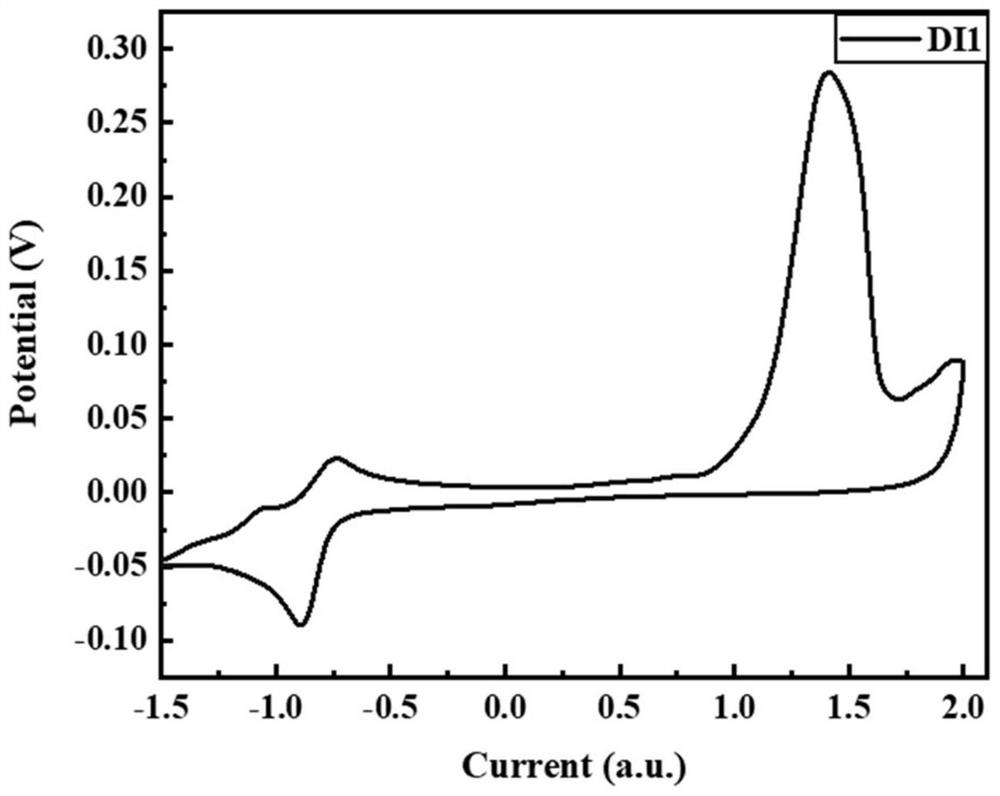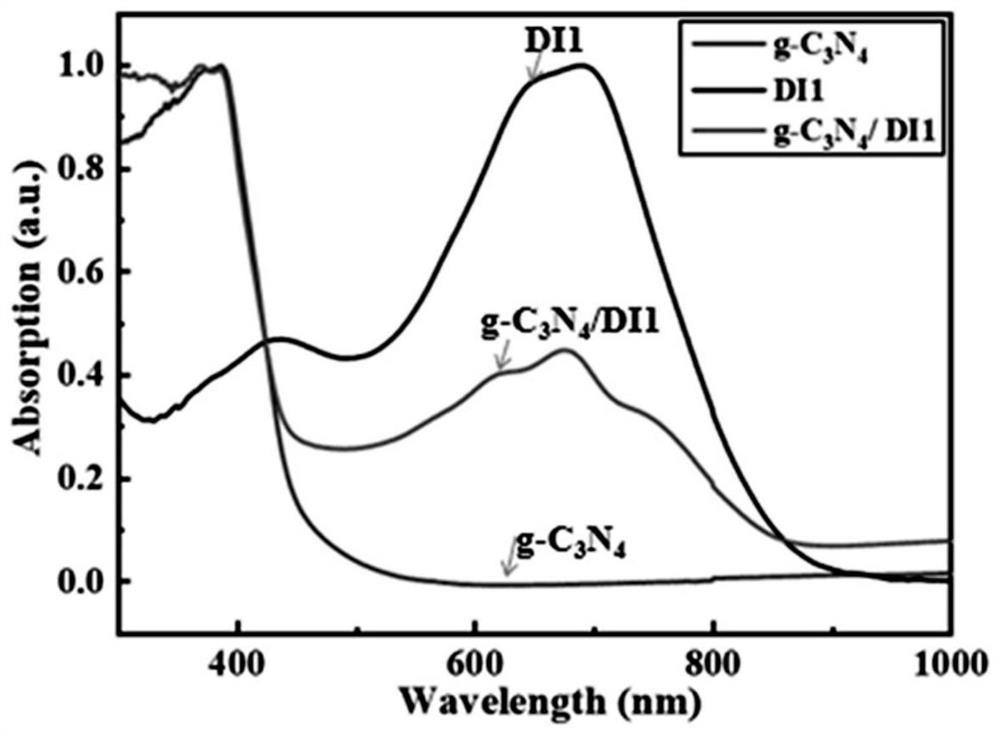Irregular ternary conjugated polymer photocatalytic material as well as preparation method and application thereof
A technology of regular ternary copolymerization structure and conjugated polymer, which is applied in the field of non-regular ternary conjugated polymer photocatalytic materials and its preparation, can solve the problems of low utilization rate of visible light, high recombination rate of photogenerated electrons and holes, etc. Achieve the effect of improving photocatalytic performance, enhancing π-π interaction force and prolonging service life
- Summary
- Abstract
- Description
- Claims
- Application Information
AI Technical Summary
Problems solved by technology
Method used
Image
Examples
preparation example Construction
[0027] The present invention also discloses a preparation method of the above-mentioned non-regular ternary conjugated polymer photocatalytic material, and obtains a non-regular ternary conjugated polymer photocatalytic material through the following reaction polymerization, which specifically includes the following steps:
[0028] Under the nitrogen atmosphere, A, B monomers and π bridging units are synthesized by random copolymerization under the action of catalysts according to different molar ratios. A non-regular ternary conjugated polymer photocatalytic material is synthesized. The sum of the three units is 1, and the ratio can be chosen arbitrarily, that is, x+y=1 and x>0, y>0. According to the different combinations of the selected monomers A, B and bridging units, it is generally a Stille cross-coupling reaction of halogenated aromatic hydrocarbons with organotin compounds or organoboronate esters. The choice of monomers only affects the reaction temperature and the c...
Embodiment 1
[0033] Synthesis of a non-regular ternary conjugated polymer photocatalytic material DIn (n=1, 2, 3):
[0034]
[0035] As shown above, when the synthetic DIn (n=1, 2, 3) has different values of n, the ratios of x and y are:
[0036] DI1 x:y=1:3
[0037] DI2 x:y=2:2
[0038] DI3 x:y=3:1
[0039] The synthesis steps are as follows:
[0040] (1) Synthesis of DI1
[0041] In a two-necked flask, 6,6'-dibromo-1,1'-bis(2-hexyldecyl)isoindigo (287.40 mg, 0.331 mmol), 3,6-bis(5-bromo-2-thienyl) )-2,5-bis(2-hexyldecyl)pyrrolo[3,4-c]pyrrole-1,4(2H,5H)-dione (100 mg, 0.110 mmol), (3,3'-dione Fluoro-[2,2'-bithiophene]-5,5'-diyl)bis(trimethylstannane) (232.79 mg, 0.441 mmol), tris(dibenzylideneacetone)dipalladium (40.38 mg, 0.044 mmol) mixed. Under nitrogen atmosphere, 25 mL of anhydrous chlorobenzene was added to the flask, and the reaction mixture was heated to reflux at 130° C. for 48 h. After cooling to room temperature, the mixture was poured into methanol. The precipitate...
Embodiment 2
[0047] The optical and electrochemical properties of DI1 in the non-regular terpolymer material synthesized in Example 1 were tested and compared with g-C 3 N 4 The prepared type I heterojunction is used in the field of photocatalytic hydrogen production.
[0048] Synthesis steps:
[0049] First, the prepared g-C 3 N 4 It was ultrasonically dispersed with DI1 in 20 mL of chloroform solution at mass ratios of 0 wt %, 0.5 wt %, 1 wt %, 2 wt %, 3 wt %, and 4 wt % for 1 h, and then stirred vigorously at room temperature overnight. The mixed solution was evaporated to dryness on a rotary evaporator. Finally, the product was collected by filtration drying the mixed sample.
[0050] The results show that: in g-C 3 N 4 In the / DI1 heterojunction, when the mass ratio of DI1 is 2wt%, the photocatalytic hydrogen evolution rate can reach 16000 μmol g -1 h -1 . It is shown that the non-regular ternary conjugated polymer photocatalytic material DI1 matches the carbon nitride energ...
PUM
 Login to View More
Login to View More Abstract
Description
Claims
Application Information
 Login to View More
Login to View More - R&D
- Intellectual Property
- Life Sciences
- Materials
- Tech Scout
- Unparalleled Data Quality
- Higher Quality Content
- 60% Fewer Hallucinations
Browse by: Latest US Patents, China's latest patents, Technical Efficacy Thesaurus, Application Domain, Technology Topic, Popular Technical Reports.
© 2025 PatSnap. All rights reserved.Legal|Privacy policy|Modern Slavery Act Transparency Statement|Sitemap|About US| Contact US: help@patsnap.com



